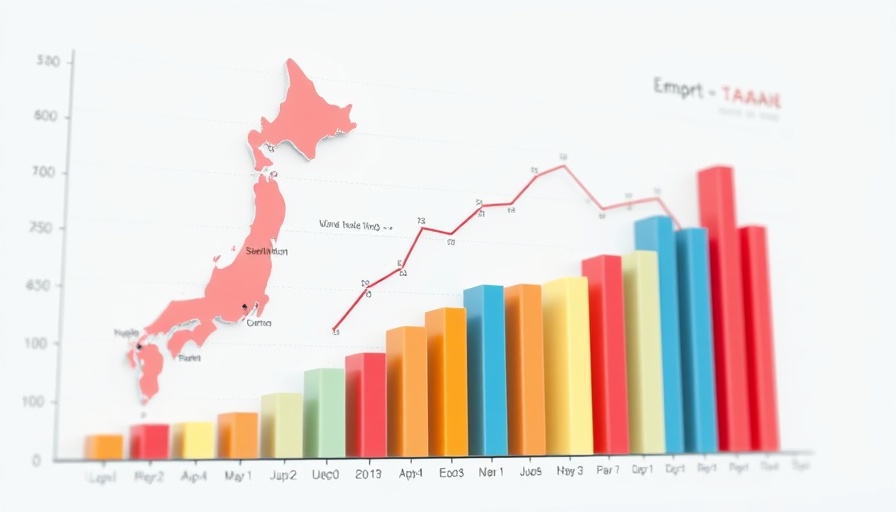
Japan's Trade Balance: An Unexpected Shift
In May, Japan's trade balance revealed surprising resilience as it shrank less than analytical forecasts anticipated. The recent figures indicate a trade deficit of 637.6 billion yen ($4.39 billion), a substantially better outcome than the predicted deficit of 893.0 billion yen. Although this marks a deterioration from the deficit of 115.8 billion yen recorded last month, the overall outcome sheds light on the complex dynamics of Japan's export landscape amid international trade pressures.
Understanding the Decline in Exports
The latest data shows that Japan's exports fell by 1.7% year-on-year, which was lower than the expected 3.8% decline. This decline can be interpreted as the Japanese economy grappling with the aftershocks of increased U.S. tariffs on key goods, including automobiles. However, the ability to limit export losses reflects a certain resilience within Japan’s broader economic framework, suggesting that while tariffs present hurdles, their impact is being managed more effectively than previously feared.
The Role of External Tariffs
Rising tariffs have dominated headlines globally, influencing various trade relationships. Japan's experience with U.S. tariffs on automobiles illustrates the significance of trade policy shifts. The relatively minor decline in exports suggests that Japanese manufacturers are adapting to their changing environment, finding ways to maintain competitiveness despite increased costs associated with tariffs. This resilience may be attributed to innovative strategies in production and distribution, helping mitigate losses from reduced international demand.
Implications for Investors and Markets
For investors, the recent trade balance figures present both challenges and opportunities. Despite the rising deficits, the lower-than-expected drop in exports could help stabilize perceptions about Japan's economic prospects in the global market. This dynamic may influence investment strategies, particularly in sectors such as automotive and electronics — sectors heavily reliant on export performance.
Investment Strategies Amid Economic Indicators
Understanding the nuances of economic indicators like Japan's trade balance is key for effective investment strategies. Investors must remain alert to how trade deficits influence market volatility. For example, a weak yen may bolster exports by making Japanese products cheaper for foreign buyers, which could stabilize or even enhance profitability for international investors considering Japanese stocks.
Furthermore, maintaining a diversified portfolio can help mitigate risk associated with market fluctuations. As seen in current trends, sectors may react differently to changes in trade policy, making it crucial for investors to balance their holdings among stocks, bonds, and alternative investments to achieve steady growth.
Looking Ahead: Future Predictions
Looking towards the future, several factors will shape Japan's trade and economic landscape. Ongoing negotiations in international trade, shifts in global demand, and domestic policy adaptations will continue to affect Japan's performance. Investors should monitor these evolving dynamics, as they will dictate both short- and long-term market behaviors.
Investors may benefit by employing risk management strategies tailored to navigate these changes in the market landscape. For instance, considering sectors with growth potential, like technology and renewable energy, could provide alternatives to traditional investments faced with tariff challenges.
Investment Education as a Tool for Success
Given the complex interplay between trade balances and investment outcomes, education plays a critical role. Resources such as investment apps and online brokerage accounts can empower investors to make informed decisions based on timely economic data. Engaging with professional investment research tools can further enhance one's ability to assess current market conditions.
Ultimately, understanding the implications of trade balances like Japan’s can influence comprehensive investment decisions. Whether through ETF investing or exploring growth stocks, staying informed about economic indicators and associated risks provides a path to financial success.
 Add Row
Add Row  Add
Add 



Write A Comment